Morocco re-joined the African Union earlier this year, and the festival reflected an eagerness to connect Morocco with other parts of the continent.

The view from the outside of the Casablanca International Book Fair
Morocco re-joined the African Union earlier this year, and the festival reflected an eagerness to connect Morocco with other parts of the continent. The Economic Community of Central African States (ECCAS) was the book fair’s official guest of honour, and the 11 member countries including Angola, Burundi, Cameroon, The Congo, Rwanda, and Chad, literally took centre-stage. Each country had a stand labelled with its flag and staffed by a representing publisher. The event was bilingual, with all signs and information in Arabic and in French.
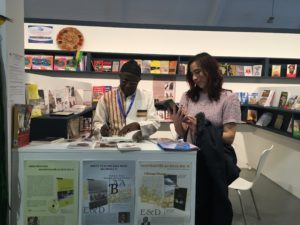
July Blalack with Prince Kum’a Ndumbe III, editor of Le Trésor Des Manuscrits De Timbuktu
While exploring the Stand Invité d’honneur, a poster in the Cameroonian booth caught my eye. The association Les Editions AfricAvenir had published a collection of studies around Timbuktu’s manuscripts earlier this year, and the editor Prince Kum’a Ndumbe III was signing copies and discussing his work with a few curious researchers. Another representative from Les Editions AfricAvenir showed me around and recommended different French and English poetry collections. I decided to buy a copy of Le Trésor Des Manuscrits De Timbuktu, and had the chance to talk to Ndumbe about the project while he signed my book. The subject fit perfectly with the theme of the book fair itself, as Timbuktu has been a site of literary exchange between Morocco and other parts of Africa for centuries.
The Casablanca Book Fair also featured a remarkable selection of contemporary Arabic literature from publishers such as al-Markaz al-Thaqafi al-ʻArabi and Dar al-Saqi, as well as classic Arabic and Islamic literature from various parts of the Arab World, including Cairo’s al-Maktabah al-Azhariyah lil-Turath. Local Casablanca booksellers were also represented, with standouts including Dar al-Thaqafah and LivreMoi.
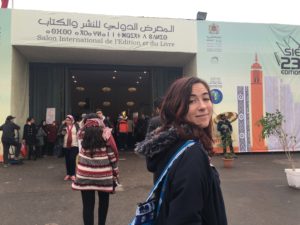
July Blalack at the entrance of the 23rd Annual Casablanca Book Fair in Morocco
The festival included a wide range of events, among them academic and literary discussions, book signings, poetry readings, award ceremonies, and even activities for children. To see photographs and videos from the event, or to browse the complete program, you can visit the official website in Arabic or in French.
- Le Trésor Des Manuscrits De Timbuktu, Kum’a Ndumbe III
- 23rd Annual Casablanca International Book Fair Kicks Off Morocco World News, 9 February 2017
- Morocco rejoins African Union after more than 30 years The Guardian, 31 January 2017
Relevant posts
How Love is Revolution: The Unexpected Love Objects of Dunya Noor
The novelist Rana Haddad writes about her novel, "The Unexpected Love Objects of Dunya Noor" for the MULOSIGE project.
Editorial for Special Issue of ‘Foreign Literatures’ on Indian Literature
Simon Leese translates ‘This issue’ (editorial for special issue on Indian Literature) by ʿAlī ʿUqlah ʿUrsān (Ali Ukla Ursan) al-Ādāb al-ajnabīyah 54 and 55, Winter [1987] and Spring 1988: 3-8. The original essay can
The Development of Arab-Indian Cultural Relations
Simon Leese translates Taṭawwurāt al-ʿalāqāt al-thaqāfīyah al-ʿarabīyah—al-Hindīyah (The Development of Arab-Indian Cultural Relations) by Mohiaddin Alwaye in al-Risālah 1083, 15th October 1964: 15-17, 20. The original essay can be found at the Alsharekh.org archive.


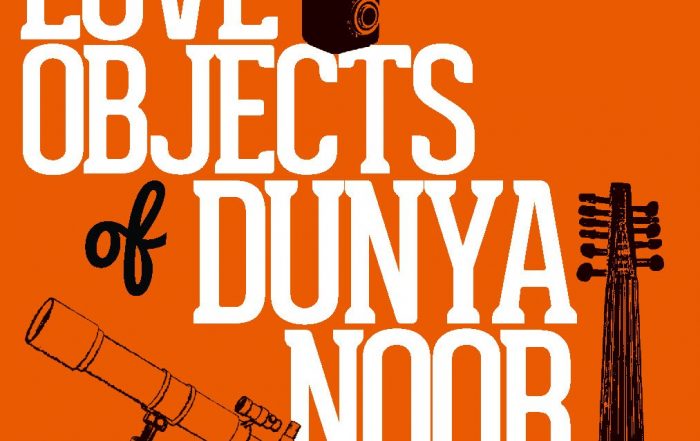
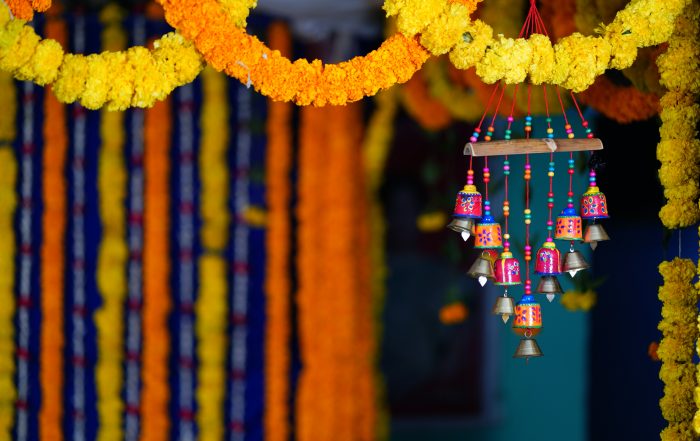
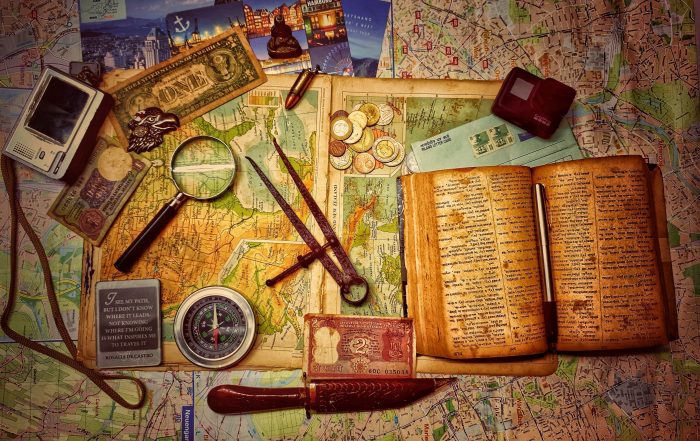
Leave A Comment